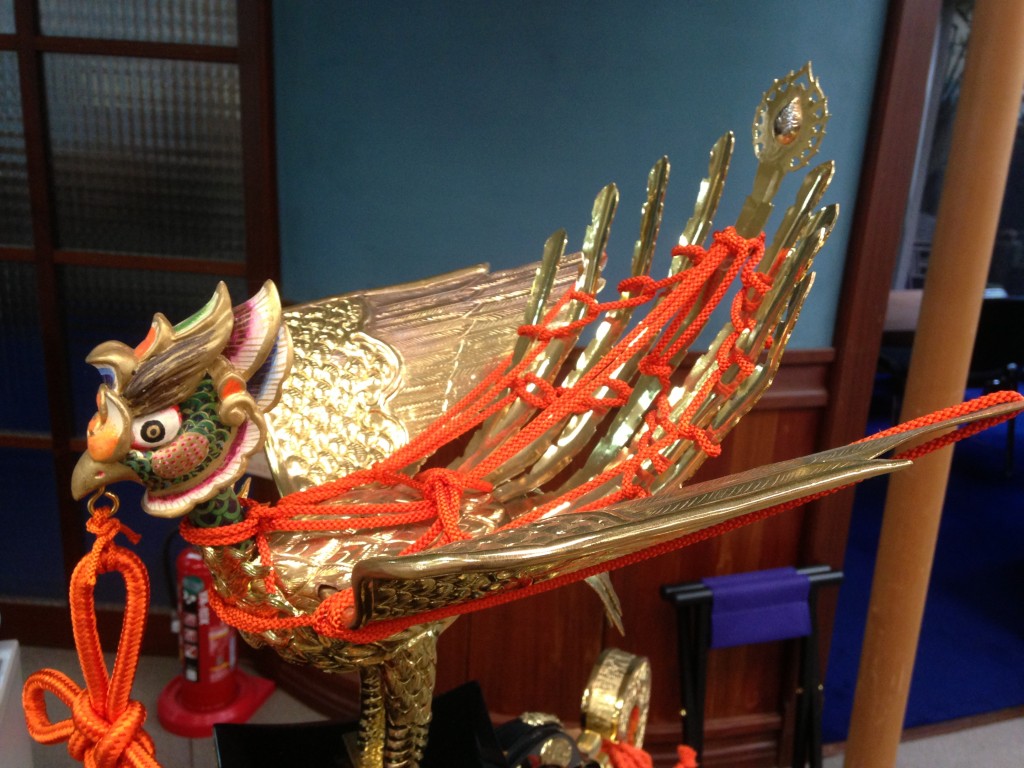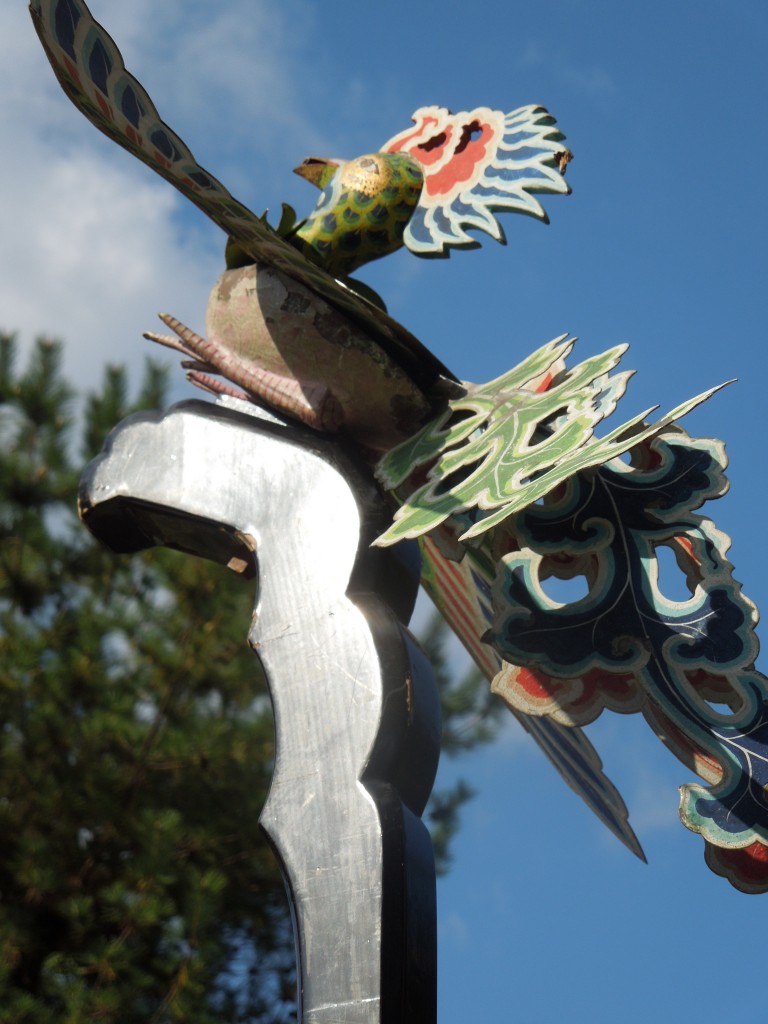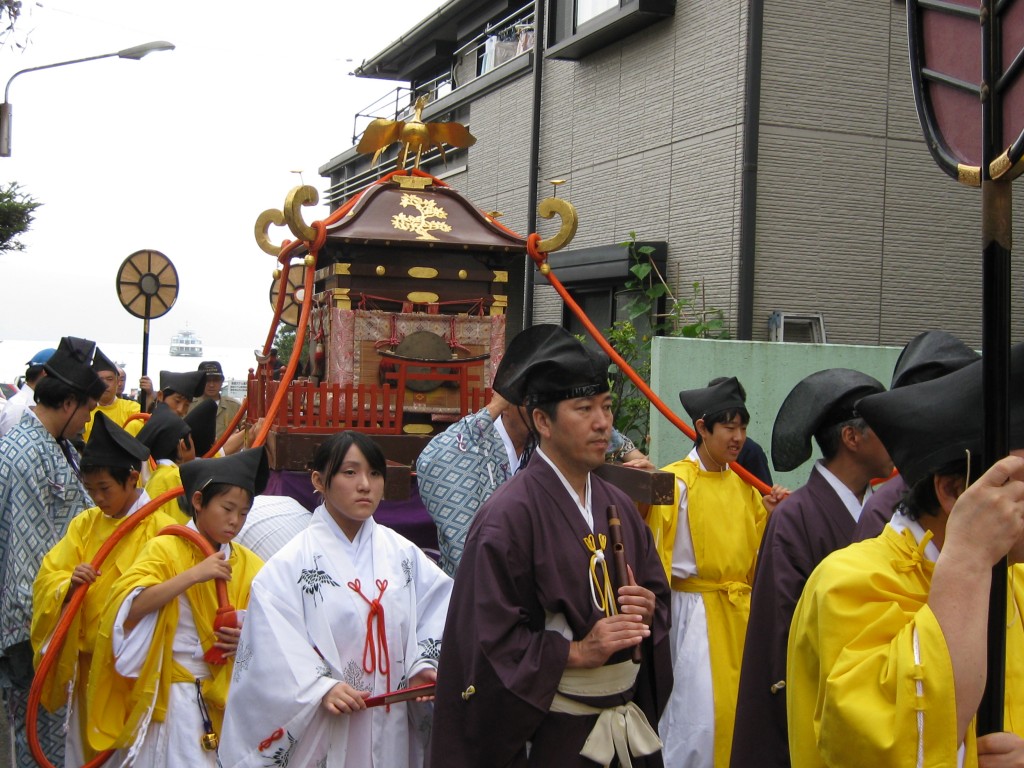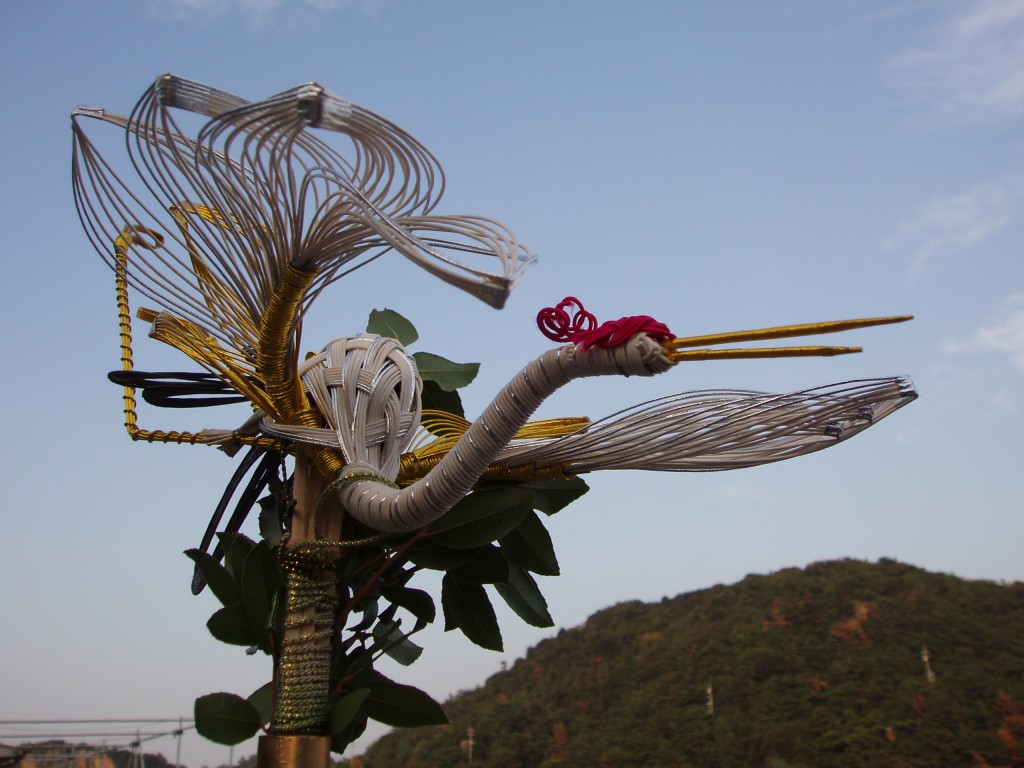
Close-up of a phoenix atop a mikoshi
On top of the Japanese mikoshi (portable palanquin) there usually sits a hō-ō, or phoenix. It’s a significant feature, since in the container below sits Shinto’s most sacred object, the spirit-body of the shrine kami. Why should there be a bird perched on top? The obvious answer is because it represents flight to another world, an intermediary between earth and heaven as it were. But why a phoenix, of all birds? Those of us in the West are used to thinking of the bird as a symbol of rising from the ashes, but what does it have to do with Shinto? In the article below, taken from the ancient origins website, Liz Leafloor looks at the symbolism of the imaginary bird, which captivated the Indo-European world and spread to Japan through the influence of China.
****************************************************
Ancient Symbolism of the Magical Phoenix
By Liz Leafloor 29 AUGUST, 2014
The symbolism of the Phoenix, like the mystical bird itself, dies and is reborn across cultures throughout time. Ancient legend paints a picture of a magical bird, radiant and shimmering, which lives for several hundred years before it dies by bursting into flames. It is then reborn from the ashes, to start a new, long life. So powerful is the symbolism that it is a motif and image that is still used commonly today in popular culture and folklore.

Phoenix carried on a pole at the Yasui Konpira-gu festival in Kyoto
The legendary phoenix is a large, grand bird, much like an eagle or peacock. It is brilliantly coloured in reds, purples, and yellows, as it is associated with the rising sun and fire. Sometimes a nimbus will surround it, illuminating it in the sky. Its eyes are blue and shine like sapphires. It builds its own funeral pyre or nest, and ignites it with a single clap of its wings. After death it rises gloriously from the ashes and flies away.
The phoenix symbolizes renewal and resurrection, and represents many themes, such as “the sun, time, the empire, metempsychosis, consecration, resurrection, life in the heavenly Paradise, Christ, Mary, virginity, the exceptional man”.
Tina Garnet writes in The Phoenix in Egyptian, Arab, & Greek Mythology of the long-lived bird, “When it feels its end approaching, it builds a nest with the finest aromatic woods, sets it on fire, and is consumed by the flames. From the pile of ashes, a new Phoenix arises, young and powerful. It then embalms the ashes of its predecessor in an egg of myrrh, and flies to the city of the Sun, Heliopolis, where it deposits the egg on the altar of the Sun God.”
There are lesser known versions of the myth in which the phoenix dies and simply decomposes before rebirth.
The Greeks named it the Phoenix but it is associated with the Egyptian Bennu, the Native American Thunderbird, the Russian Firebird, the Chinese Fèng Huáng, and the Japanese Hō-ō.
It is believed that the Greeks called the Canaanites the Phoenikes or Phoenicians, which may derive from the Greek word ‘Phoenix’, meaning crimson or purple. Indeed, the symbology of the Phoenix is also closely tied with the Phoenicians.
Perhaps the earliest instance of the legend, the Egyptians told of the Bennu, a heron bird that is part of their creation myth. The Bennu lived atop ben-ben stones or obelisks and was worshipped alongside Osiris and Ra. Bennu was seen as an avatar of Osiris, a living symbol of the deity. The solar bird appears on ancient amulets as a symbol of rebirth and immortality, and it was associated with the period of flooding of the Nile, bringing new wealth and fertility.
Greek historian Herodotus wrote that priests of ancient Heliopolis described the bird as living for 500 years before building and lighting its own funeral pyre. The offspring of the birds would then fly from the ashes, and carry priests to the temple altar in Heliopolis. In ancient Greece it was said the bird does not eat fruit, but frankincense and aromatic gums. It also collects cinnamon and myrrh for its nest in preparation for its fiery death.
In Asia the phoenix reigns over all the birds, and is the symbol of the Chinese Empress and feminine grace, as well as the sun and the south. The sighting of the phoenix is a good sign that a wise leader has ascended to the throne and a new era has begun. It was representative of Chinese virtues: goodness, duty, propriety, kindness and reliability. Palaces and temples are guarded by ceramic protective beasts, all lead by the phoenix.
The mythical phoenix has been incorporated into many religions, signifying eternal life, destruction, creation and fresh beginnings. Due to the themes of death and resurrection, it was adopted as a symbol in early Christianity as an analogy of Christ. The image became a popular symbol on early Christian tombstones. It is also symbolic of a cosmic fire some believe created the world and which will consume it.
In Jewish legend the phoenix is known as the Milcham – a faithful and immortal bird. Going back to Eden, when Eve possessed the apple of knowledge, she tempted the animals of the garden with the forbidden fruit. The Milcham bird refused the offer, and was granted for its faith a town where it would live in peace almost eternally, rebirthing every thousand years, immune to the Angel of Death.
The Phoenix is also an alchemical symbol. It represents the changes during chemical reactions and progression through colors, properties of matter, and has to do with the steps of alchemy in the making of the Great Work, or the Philosopher’s Stone.
Modern additions to the myth in popular culture say the tears of the phoenix have great healing powers, and if the phoenix is near one cannot tell a lie. Continually morphing and remorphing, the phoenix represents the idea that the end is only the beginning. Much like this powerful myth, the symbol of the phoenix will be reborn over and over again in human legend and imagination.

Mikoshi with phoenix on top in the annual matsuri procession at Hakone Jinja


Leave a Reply